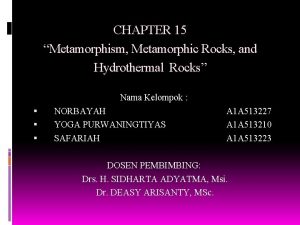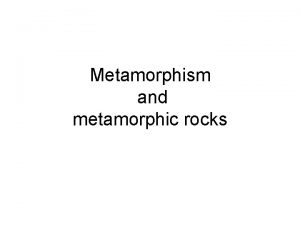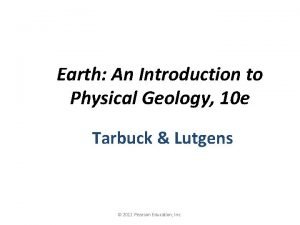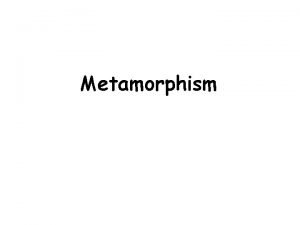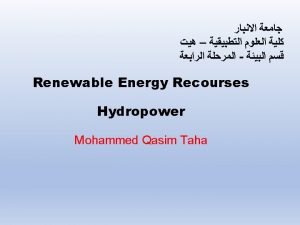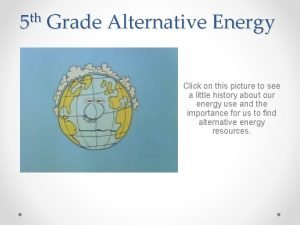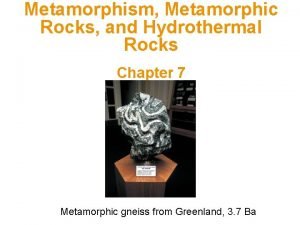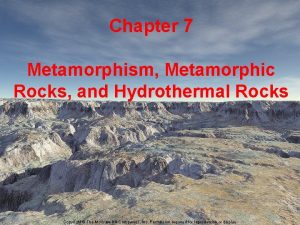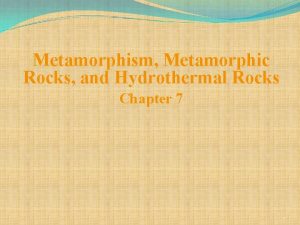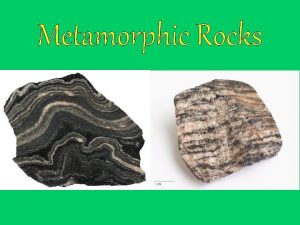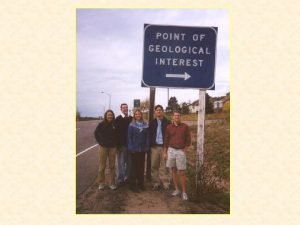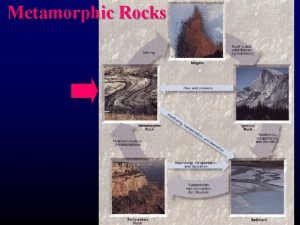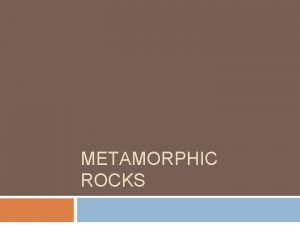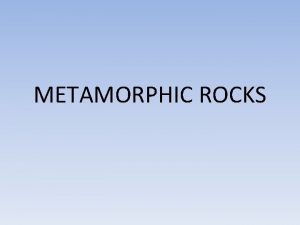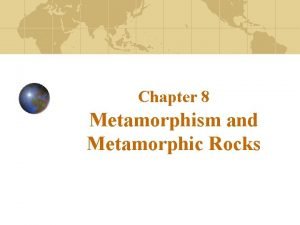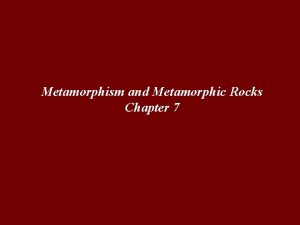Metamorphism Metamorphic Rocks and Hydrothermal Rocks Chapter 7














- Slides: 14

Metamorphism, Metamorphic Rocks, and Hydrothermal Rocks Chapter 7 Metamorphic gneiss from Greenland, 3. 7 Ba

Metamorphic Rocks • Metamorphism refers to solid-state changes to rocks in Earth’s interior – Produced by increased heat, pressure, or the action of hot, reactive fluids – Old minerals, unstable under new conditions, recrystallize into stable ones • Rocks produced from pre-existing or parent rocks in this way are called metamorphic rocks

Metamorphic Rocks • Metamorphic rocks common in the old, stable cores of continents, known as cratons *Oldest stable continental core *Seismically fast *Geothermally cold *Buoyant – low density (chemically depleted)

Factors Controlling Metamorphic Rock Characteristics • Texture and mineral content of metamorphic rocks depend on: – – Parent rock composition Temperature and pressure Effects of tectonic forces Effects of fluids, such as water

Factors Controlling Metamorphic Rock Characteristics • Temperature during metamorphism – Heat for metamorphism comes from Earth’s deep interior – If temperature gets high enough, melting will occur • Pressure during metamorphism – Confining pressure applied equally in all directions – Pressure proportional to depth within the Earth • increases ~1 kilobar per 3. 3 km of burial within the crust

Characteristics of Metamorphic Rock • Tectonic forces – Often lead to forces that are not equal in all directions (differential stress) – Compressive stress causes flattening perpendicular to stress – Shearing causes flattening by sliding parallel to stress – Planar rock texture of aligned minerals produced by differential stress is known as foliation

Deformation of Metamorphic Rock • Fluids – Hot water (as vapor) is most important, – Rising temperature causes water to be released from unstable minerals • Time – Metamorphism, particularly from high pressures, may take millions of years – Longer times allow newly stable minerals to grow larger and increase foliation

Metamorphic Rock Classification • Classification based on rock texture – Foliated (layered) vs. non-foliated (non-layered) – Foliated rocks named based on type of foliation (slaty, schistose, gneissic) – Non-foliated rocks named based on composition limestone marble granite Foliated gneiss

Types of Metamorphism • Contact metamorphism – High temperature – Produces non-foliated rocks – Rocks come in contact with magma bodies intruding cooler country rock marble quartzite

Types of Metamorphism • Regional metamorphism – – High pressure Results in rocks with foliated textures Can deform in mountain ranges May occur over wide temperature range

Types of Metamorphism • Regional metamorphism – Higher pressure and temperature will produce increased metamorphic grade – Prograde metamorphism of shale produces: • slate • phyllite • schist • gneiss slate phyllite schist gneiss

Types of Metamorphism • Partial melting during metamorphism produces migmatites – Migmatites exhibit both intrusive igneous and foliated metamorphic textures • Shock metamorphism is produced by rapid application of extreme pressure – Meteor impacts produce this – Shocked rocks are found around and beneath impact craters

Plate Tectonics and Metamorphism • Regional metamorphism associated with convergent plate boundaries – Pressure proportional to depth – Temperature varies laterally at convergent boundaries • Isotherms bow down in sinking oceanic plate and bow up where magma rises

Hydrothermal Processes • Rocks precipitated from or altered by hot water are referred to as hydrothermal – Common at spreading centers (under water) • Hydrothermal processes add water for metamorphic reactions • Formation of hydrothermal rocks • Water passes through rocks and precipitates new minerals on walls of cracks and in pore spaces • Metallic ore deposits often form this way (veins)
 Serpetinit
Serpetinit Miss holl
Miss holl Foliated metamorphic rocks
Foliated metamorphic rocks Quartzite
Quartzite Hydrothermal metamorphism
Hydrothermal metamorphism Types of igneous sedimentary and metamorphic rocks
Types of igneous sedimentary and metamorphic rocks Igneous metamorphic and sedimentary
Igneous metamorphic and sedimentary Venn diagram of contact and regional metamorphism
Venn diagram of contact and regional metamorphism Concept map about rocks
Concept map about rocks Chapter 6 sedimentary and metamorphic rocks
Chapter 6 sedimentary and metamorphic rocks Chapter 4 lesson 4: metamorphic rocks answer key
Chapter 4 lesson 4: metamorphic rocks answer key Geothermal energy advantages
Geothermal energy advantages Naturally occurring areas of hydrothermal resources
Naturally occurring areas of hydrothermal resources Naturally occurring areas of hydrothermal resources
Naturally occurring areas of hydrothermal resources Ventfish
Ventfish
